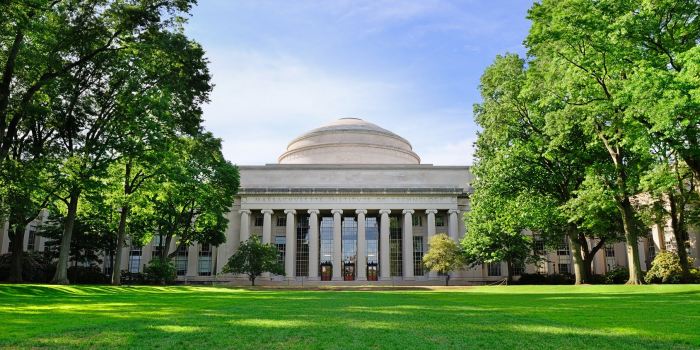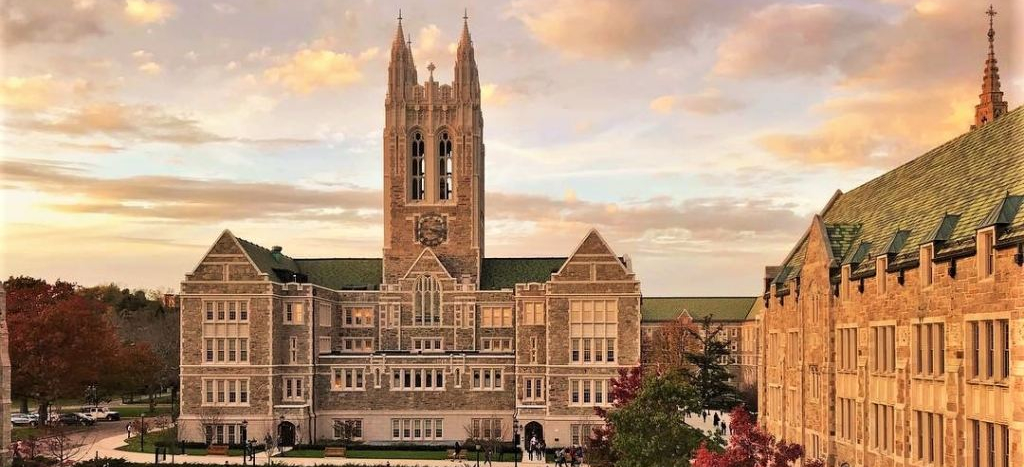As a leading research university with acceptance rates that mirror the Ivy League, the Massachusetts Institute of Technology attracts students from around the world. MIT has plenty of top-tier programs, in addition to a dual degree program with neighboring Wellesley College.
Gaining admission to MIT is a challenge even for the best students. That’s why it’s important to get an early start on college prep and build the strongest profile you can. Learn more about getting into MIT and what to consider as you prepare your application.
How to Get into MIT: Table of Contents
- When to Apply to MIT
- How Hard Is It to Get into MIT: Early Prep
- How to Actually Get into MIT: The Application
- Class Profile
- What Makes MIT Unique?
- MIT FAQs
When to Apply to MIT
Students who hope to gain admission to MIT need to be aware of the different deadlines for submitting their application materials. MIT offers two application rounds with different timelines. It’s important to choose the round that’s right for you and stay on track to submit your application and supplemental materials before the deadline.
MIT Application Deadlines
MIT’s application deadlines may vary slightly from year to year, but generally occur around the same time in the academic calendar. For students applying during the 2024-2025 admissions cycle, the major application deadlines are as follows:
- November 1: Early Action application, letters of recommendation, and SSR
- January 6: Regular Action application, letters of recommendation, and SSR
- February 15: Financial aid materials for all applicants
- Mid-February: February Updates & Notes form (including midyear grades) for all applicants
MIT recommends a November testing date at the latest for students applying Early Action. Students applying Regular Action should complete standardized testing no later than December.
Admissions decisions are released in mid-December for Early Action and mid-March for Regular Action. Admitted students have until May 1 to make their decision.
Early, Rolling, and Regular Decision
College admissions involve different application timelines, such as Early Action vs rolling admission. While much of the application process will look similar regardless of your timeline, it’s important to understand the differences between early, rolling, and regular admissions.
There are two different forms of early admissions: Early Action and Early Decision. Early Decision is binding and comes with stipulations: Students must not apply ED to other schools, and if they are admitted, they must enroll and withdraw all other applications. Early Action, on the other hand, is not binding. Of these options, MIT only offers Early Action. Students can choose to apply early if the school is their top choice and their profile is strong enough without midyear senior grades.
Regular Decision, which is referred to as Regular Action at MIT, is the standard admissions timeline that requires students to submit midyear senior grades. This is a non-binding option. Students can apply to as many schools RD as they wish and are not committed to enrolling if accepted.
MIT does not offer rolling admissions, but you may see it at other schools. This is an admissions process without a strict deadline — applications are typically accepted from September to May, with students being admitted until the school reaches their enrollment capacity.
Waitlisted Applications
Students who apply Regular Action to MIT may find themselves waitlisted instead of being admitted or denied. This is because there are far more qualified students applying than MIT has space to admit. You can accept or decline your spot on the waitlist; however, it’s important to understand your chances of getting off the waitlist. For example, of the 590 students offered a place on the waitlist for the class of 2028, only nine were accepted.
Deferrals
Students who apply Early Action may receive a deferral, which means the admissions committee will evaluate their application in the Regular Action round. You may want to know what to do if you have been deferred. According to MIT, all that’s required is for you to log into the applicant portal to submit the February Updates & Notes form. If you are deferred, MIT already considers you a strong candidate, so no additional materials need to be submitted.
How Hard Is It to Get into MIT: Early Prep
As one of the most prestigious institutions in the U.S., MIT receives thousands of applications from around the world. It is also one of the most competitive schools to get into, as these admission rates show:
- Class of 2026: 3.96%
- Class of 2027: 4.80%
- Class of 2028: 4.55%
- Class of 2029: 4.52%
Getting into MIT is hard, but keep in mind that it’s a reach school for most students. To increase your chances, it’s important to start college prep early — after all, colleges look at all four years of high school.
Build Your Profile
So, what does MIT look for when reviewing applications? Academic performance is important, but what admissions officers are really looking for is a mutual fit. Your profile should demonstrate that you align with MIT’s mission to make the world better, you have a cooperative and collaborative spirit, you’re eager to take initiative and harness opportunities that come your way, and you have a creative and curious mind.
You can demonstrate these qualities in a variety of different ways, including tutoring your peers, launching your own science projects, and taking a leadership role in a volunteer position. What matters most is how you put these experiences in context to articulate why you are a match for MIT.
Visit the Campus and a Class
To truly know if you’re a match for MIT, plan a campus visit. Information sessions and guided tours take place Monday through Friday, and you must be registered to participate. Alternatively, MIT offers a self-guided tour of campus. Can’t be there in person? You can register for a Zoom info session.
Connect with a Student
If you register for a campus tour, your tour guide will be a current student. This presents a great opportunity for you to ask questions to learn more about life both inside and outside of the classroom at MIT.
Learn About Any Student Experiences
You have another opportunity to connect with students at MIT. Through “Ask a student,” you can send an email and be matched with a student who can answer your questions about their experience. Additionally, MIT student bloggers share valuable information about life on campus.
How Do You Actually Get into MIT: The Application
To apply to MIT, students must register for a myMIT account — MIT does not use the Common App or Coalition App. However, like most other colleges and universities, MIT will evaluate your application holistically. This means they will review hard factors like your grades and test scores, along with the soft factors that tell them more about who you are as a person.
GPA Requirements
MIT doesn’t have a required GPA for admission and does not share the GPA data for admitted students. However, you can assume from the low admissions rate that a strong GPA is crucial for admission. Therefore, it is important to earn the highest grades possible in as many advanced courses as you can handle successfully.
SAT and ACT Scores
While many schools remain test-optional, MIT requires you to submit standardized test scores. Much like the GPA, there’s no minimum SAT or ACT score you must earn for admission to MIT. However, the score range for the middle 50% of students admitted to the class of 2028 was 1520-1580 on the SAT and 35-36 on the ACT.
Personal Statement
Grades and test scores are undoubtedly very important, but your soft factors are what set you apart from other students with similar academic records. Because MIT has their own application, they only require you to respond to short answer essays instead of a lengthier personal statement. However, it’s important to let your personality shine through, even in your short responses!
Essays
MIT asks applicants to write responses to short essay questions to learn more about their interests and the role they would play on campus. These responses should be 100-200 words each. The prompts for 2024-25 are:
- What field of study appeals to you the most right now? (Note: Applicants select from a drop-down list.) Tell us more about why this field of study at MIT appeals to you.
- We know you lead a busy life, full of activities, many of which are required of you. Tell us about something you do simply for the pleasure of it.
- While some reach their goals following well-trodden paths, others blaze their own trails achieving the unexpected. In what ways have you done something different than what was expected in your educational journey?
- MIT brings people with diverse backgrounds together to collaborate, from tackling the world’s biggest challenges to lending a helping hand. Describe one way you have collaborated with others to learn from them, with them, or contribute to your community together.
- How did you manage a situation or challenge that you didn’t expect? What did you learn from it?
The MIT application also provides applicants with an open-ended, additional-information box where they can tell the admissions office anything else they feel might have been left out elsewhere.
Letters of Recommendation
MIT requests two recommendation letters. If possible, request one letter from a math or science teacher and the other from a humanities, social science, or language teacher. MIT also requires materials from a student’s school counselor, such as the student’s transcript, a school profile, and an additional letter of recommendation.
Select teachers who know you well enough to speak to your character as well as your contributions to the classroom. Ideally, they should be junior year teachers who know how you perform at a higher academic level. Since teachers may receive multiple requests for letters of recommendation, it’s important to ask as early as possible.
Admission Interviews
MIT wants to get to know students beyond how they look on paper. That’s why students may be contacted by an Educational Counselor — an MIT alum — for an in-person or virtual interview. Generally, the MIT interview takes approximately one hour, though it could be shorter or longer depending on the situation. These interviews are informal and give you a chance to discuss your goals and interests in more detail. If you are invited to an interview, come prepared with questions!
Contribution to the MIT Community
MIT’s mission is to make the world better, and students who are admitted have demonstrated their alignment with that mission. Your activities section and essays should show how you have made an impact, both at your school and in your community. Whenever possible, include specific details in your application about courses, organizations, and opportunities at MIT that interest you and how you plan to get involved on campus.
Class Profile
Getting into MIT takes strategic planning and hard work. It also helps to understand the profile of admitted students to see how you compare. MIT’s most recent admission statistics provide valuable information you can use to plan your strategy for grades, test scores, and more. Here are some key stats for the class of 2028.
Learn more about MIT’s best majors.
What Makes MIT Unique?
So, what is MIT known for? To start with, MIT is known for its expansive research opportunities, which are open to both graduate and undergraduate students. MIT also has a long list of faculty who are renowned in their fields of study, meaning students will have the opportunity to work with and learn from some of the world’s foremost experts.
In addition to MIT’s exceptional academic offerings, students have no shortage of options when it comes to extracurricular activities. MIT has more than 450 official student groups, or about 1 for every 10 undergraduates. If students can’t find an existing club or organization that matches their interests, it’s also easy to start their own.
Another quality that makes MIT unique is the institution’s commitment to building community. Noteworthy events and traditions include an annual Pi Day celebration, during which time MIT releases admissions decisions, and the MIT Mystery Hunt, a puzzle competition that happens every January.
Hacking is another tradition at MIT, and the institute is home to many elaborate but benign practical jokes, perpetrated anonymously. Some legendary hacks include the astonishing emergence of a large black weather balloon with MIT written all over it in the middle of a Harvard-Yale football game and a 2006 cross-country theft of Caltech’s Fleming Cannon — one of many pranks in the MIT vs. Caltech rivalry.
There is a host of MIT notable alumni, including Buzz Aldrin, Kofi Annan, Jonah Peretti, Shirley Ann Jackson, Andrea Wong, Drew Houston, Ivan Getting, and Illene S. Gordon.
MIT FAQs
When do MIT decisions come out?
Admissions decisions are released in mid-December for Early Action and mid-March for Regular Action.
What is the acceptance rate for MIT?
MIT’s admission rates are comparable to the Ivy League’s. The acceptance rate for the class of 2029 was 4.52%.
What GPA do you need to get into MIT?
MIT does not require a minimum GPA for admission and does not report the average high school GPA of admitted students. But given its extremely low admission rate, you can assume it’s necessary to achieve the highest possible GPA.
How many students are at MIT?
Based on the October 2023 enrollment data, MIT has a student population of 11,920, with 4,576 undergraduates.
Admission Counseling
Gaining admission to MIT is a daunting task for any student. An experienced college admissions counselor can guide you through each step of the process, whether you’re just starting to build your profile or working on your application. College admissions counseling helps you highlight your strongest qualities in your application so you stand out from your peers.
At IvyWise, all our college admissions counselors have direct admissions experience at some of the most prestigious schools in the U.S., including MIT. They know what admissions committees are looking for and can give you the best chance of gaining admission. Get started with an Initial Consultation.
Get Started




